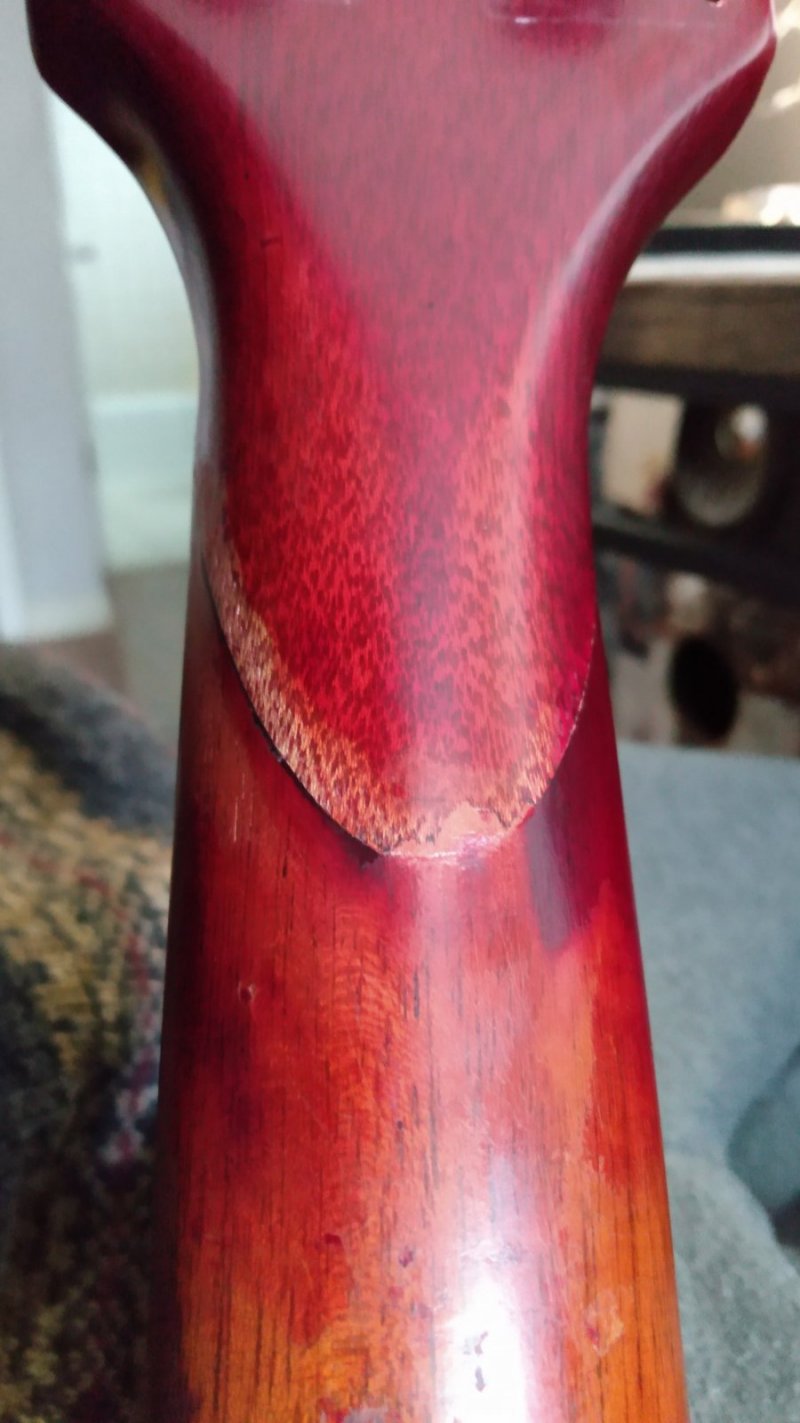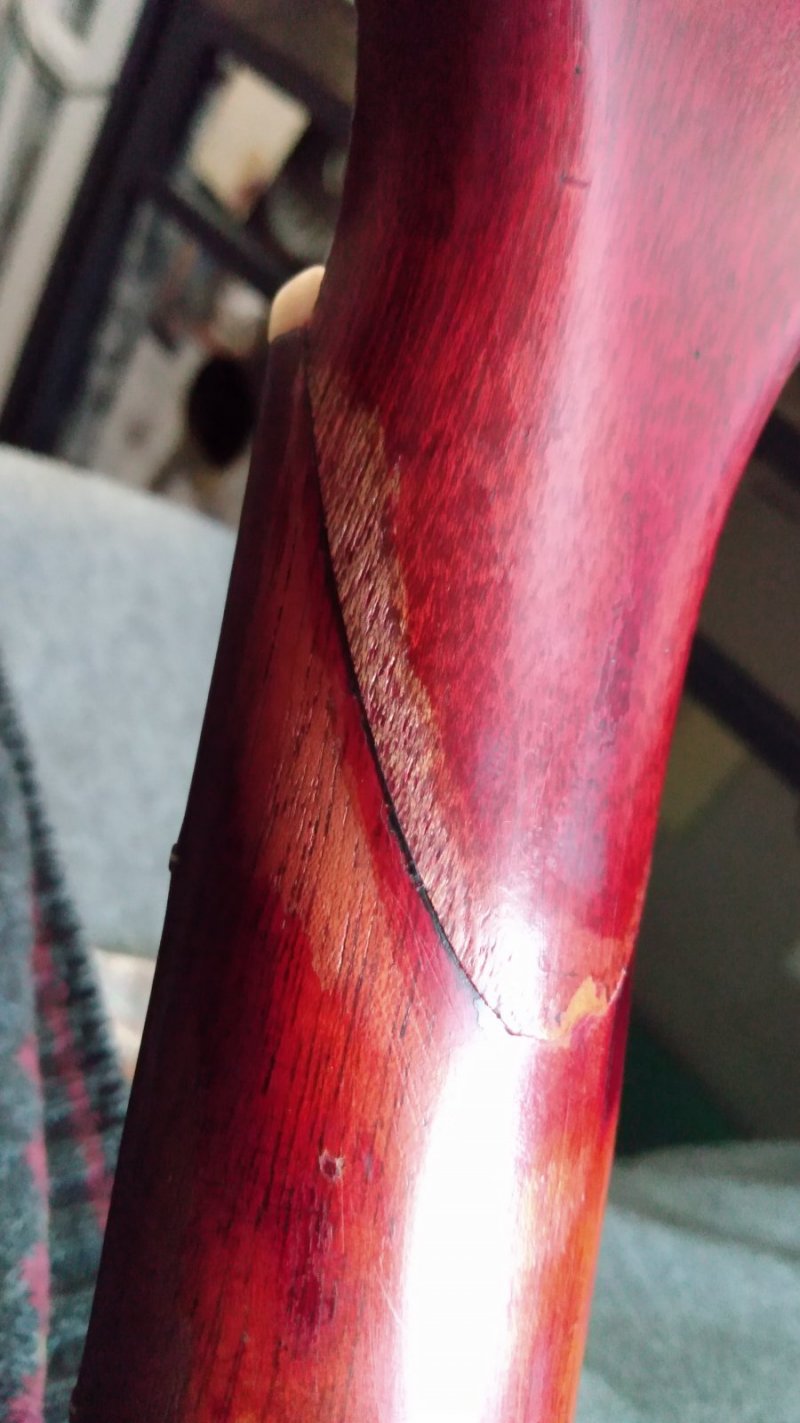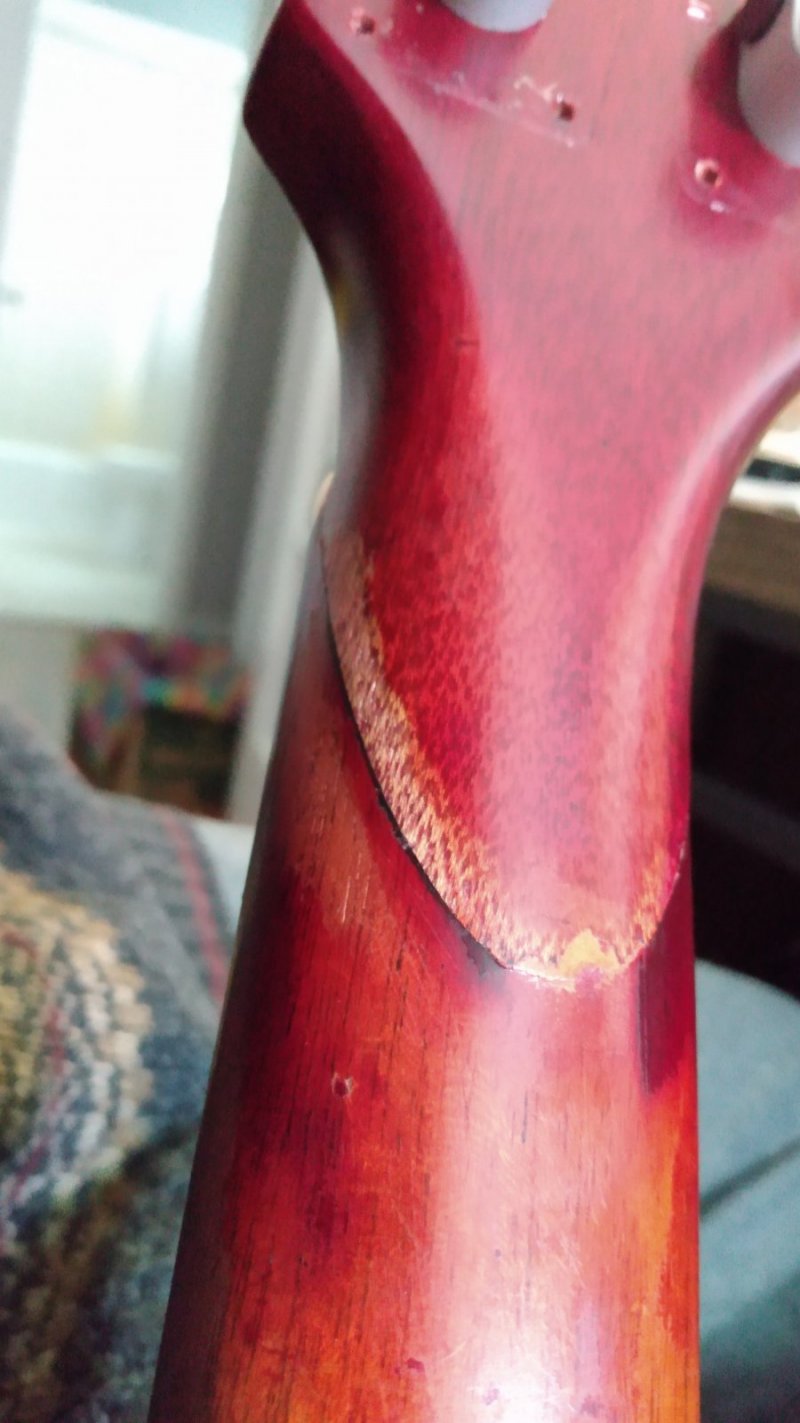mellowgerman
Senior Member
Hello, LTG tech shop friends! My beloved 1962 Gibson EB-0 had a neck repair decades before I owned it. It was never a pretty repair, but seemed totally solid, smooth, and stable.... however, a few months ago I noticed slight hairline finish cracks developing on either end of the old repair, starting up by the nut. When I took the bass out of the case last week, I noticed the seam/crack had now extended all the way around the repair. It seems the headstock is pulling forward with the string tension and the repair may be separating. However, applying a little bit of pressure, I am unable to get the seam to open up. My go-to luthier here in the area said he won't be able to repair it before the seam actually opens up. That said, there is essentially a tiny ledge all the way around the repair joint, where the headstock side of the repair is ever-so-slightly higher than the neck side of the repair. Have any of you seen something like this before? I know an improperly done repair can come apart over time, but again, the seam doesn't actually appear to be opening, just lifting slightly... almost like the headstock side wood had expanded a bit? Could that be the case due to humidity changes maybe? Perhaps the glue joint itself is actually holding strong still? If that was the case, would the appropriate treatment possibly be just having a capable luthier sanding it flush again and touching up the finish? Normally a showing repair seam doesn't bother me at all, but since this can now be felt under my thumb as I'm playing, it's really distracting and somewhat hindering to smooth playing in that area on the neck. What do you guys think? Any recommendations would be appreciated! I am happy to pay for a repair as necessary, but would of course be helpful to know what might be going on there in the first place, to get a better idea of what I'm up against here. Thank you in advance!





